The two main codes of British horse racing are Flat and National Hunt, however, within these there are lots of different types of horse races, ranging from Group races to handicaps, claimers to hurdle races and lots in between.
There are many different horse racing classes and horse racing grades competed in the UK. This to cater for the different ability of horses.
The race categories are generally determined by the horse’s official rating, with Groups One (or Class One) being for the highest-rated and Class Seven for the lowest in handicap classes.
If you want to know more about a specific class of horse races check out our guides on each of the following horse racing types.
- Grade 1 Jump Races
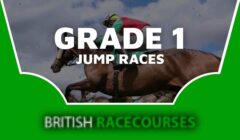
- Grade 2 Jump Races
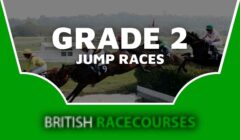
- Grade 3 Jump Races
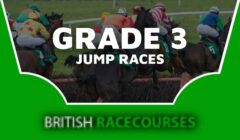
- Group 1 Horse Races
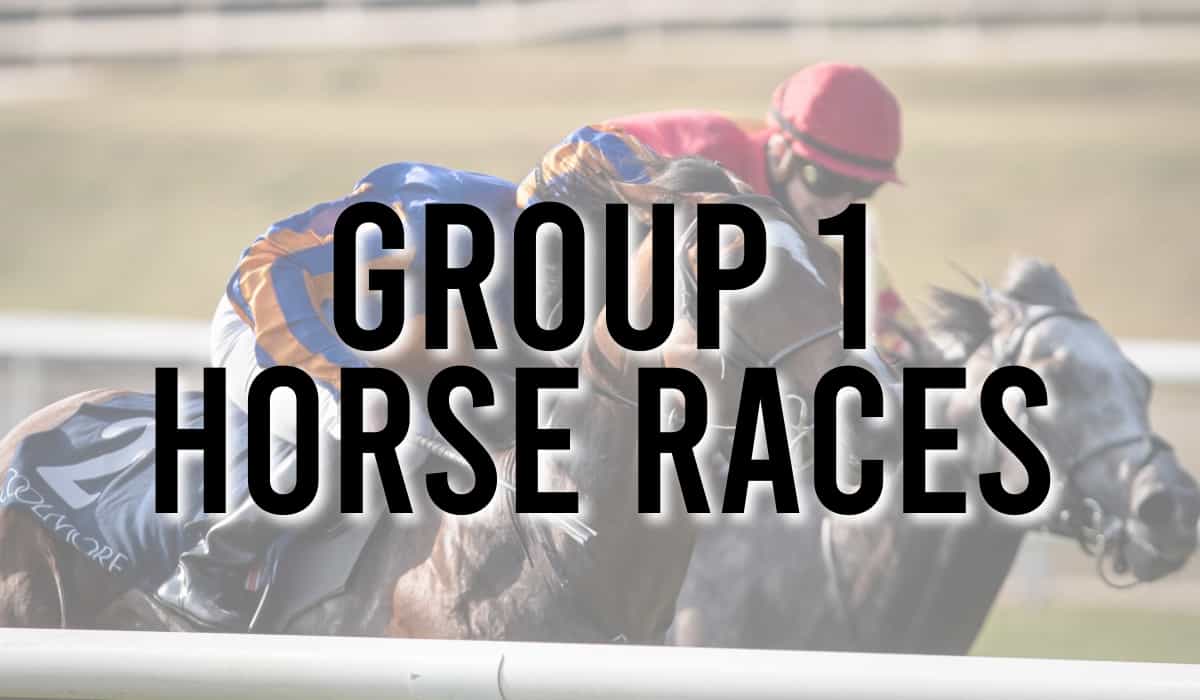
- Group 2 Horse Races
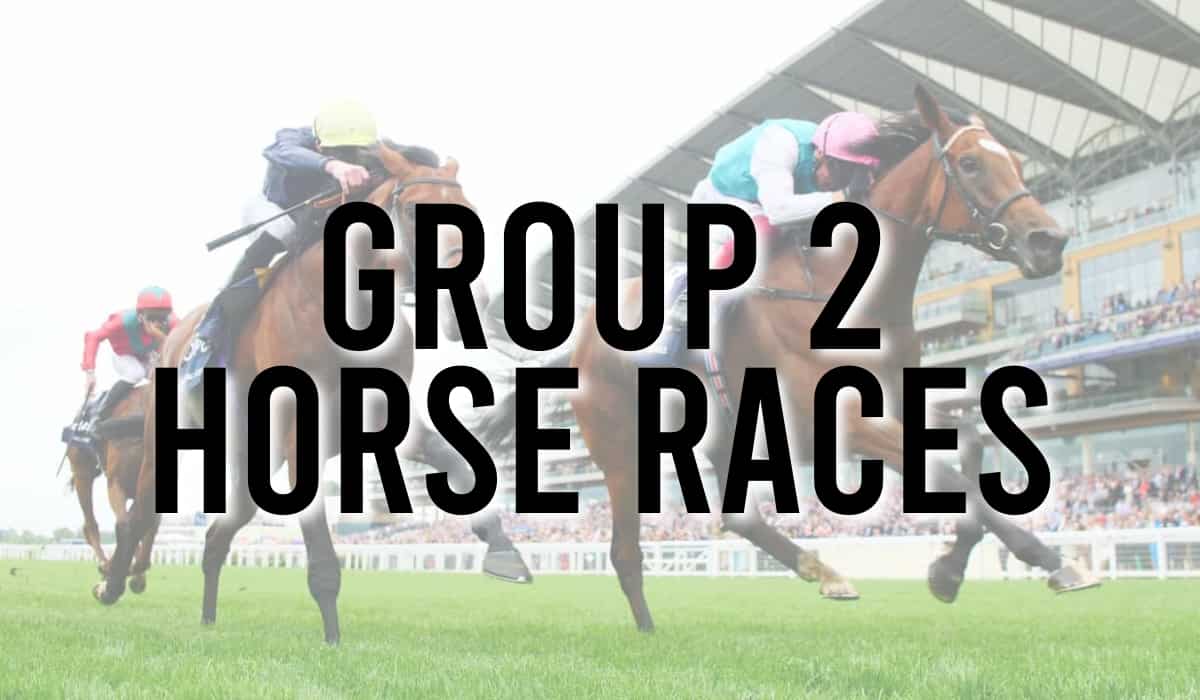
- Group 3 Horse Races
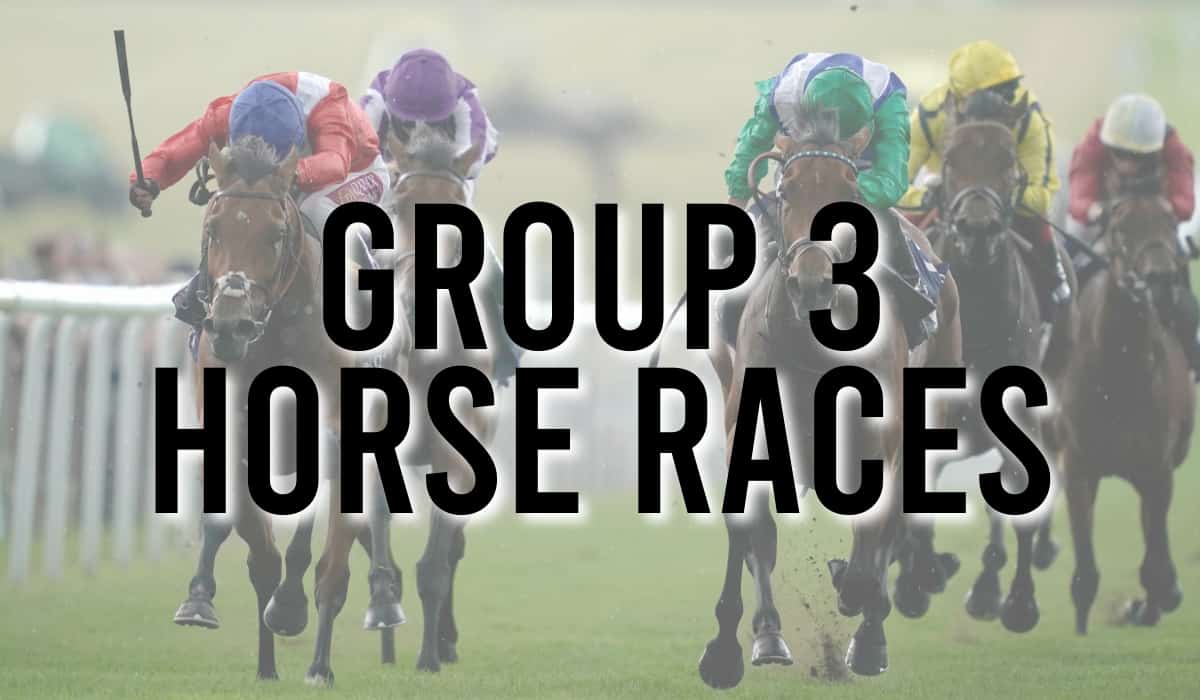
- International Horse Racing
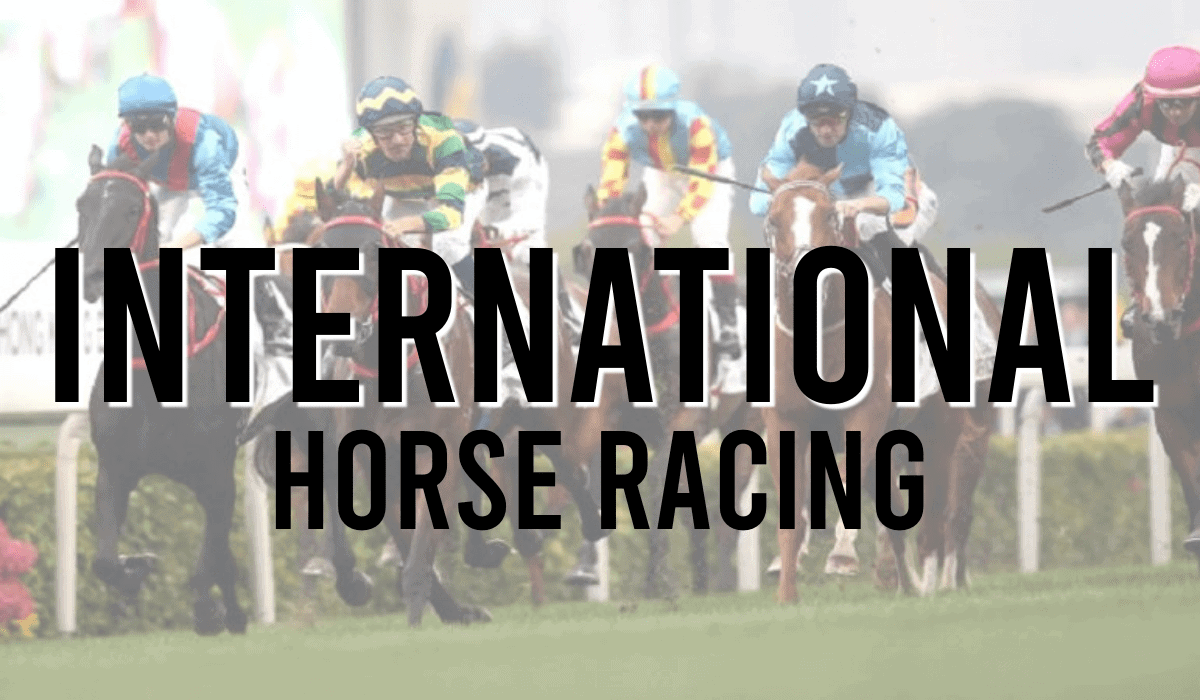
- Irish Group 1 Horse Races
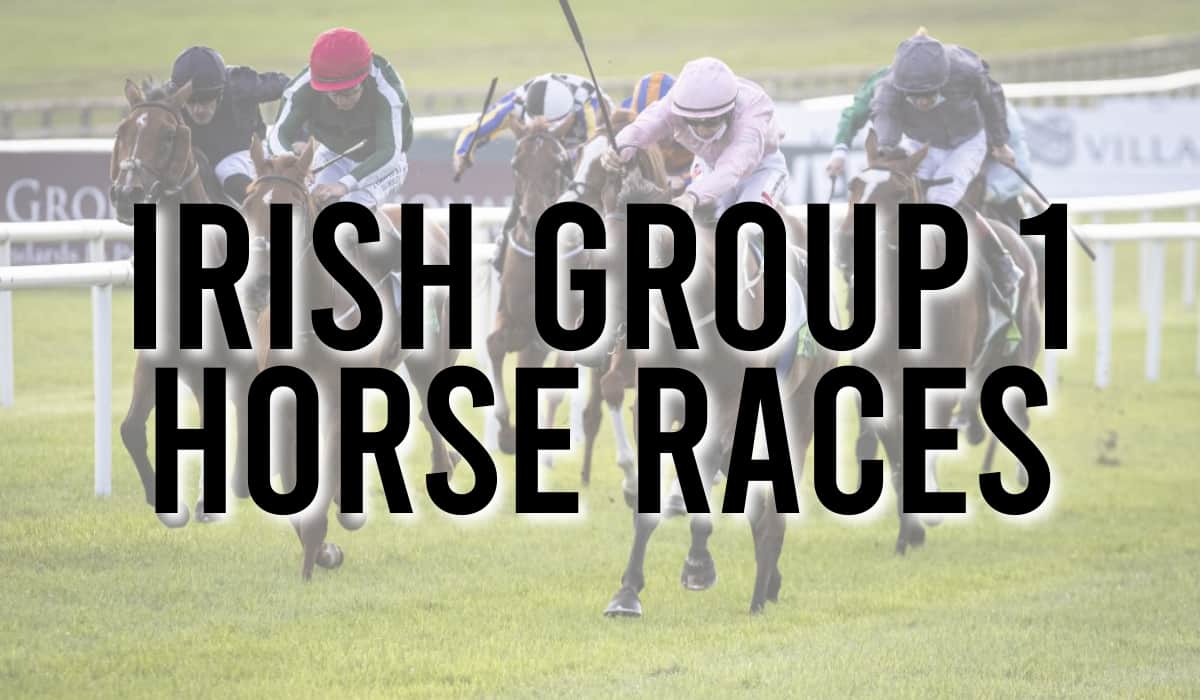
- Irish Group 2 Horse Races
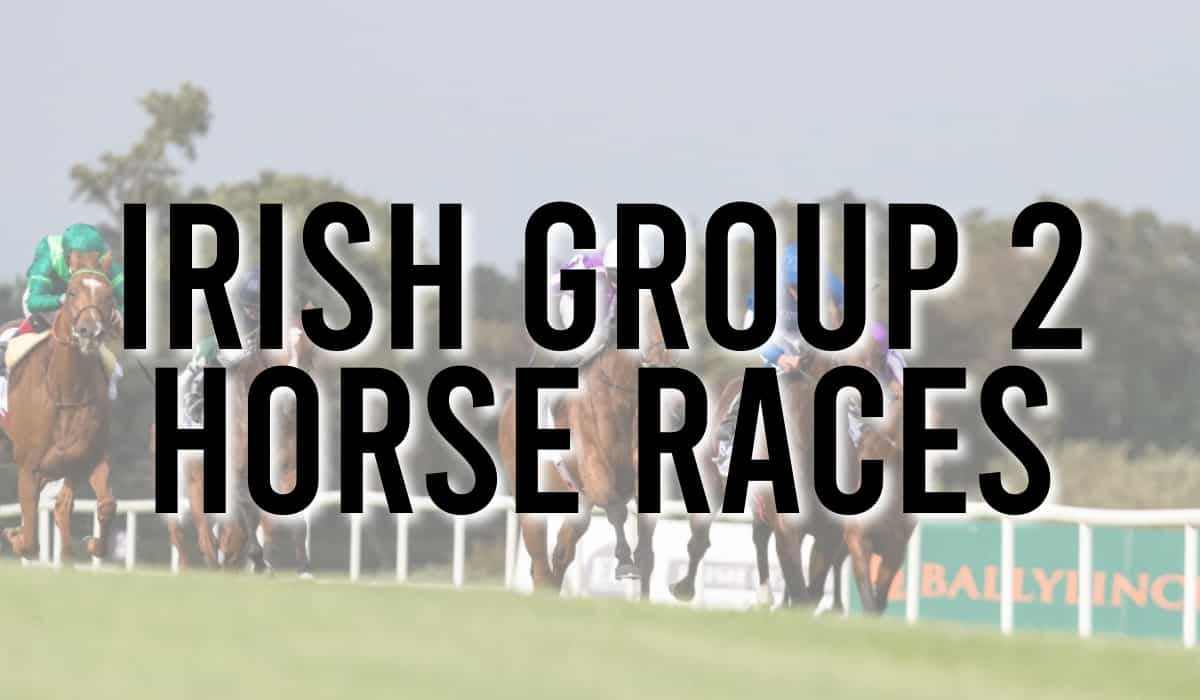
- Irish Group 3 Horse Races
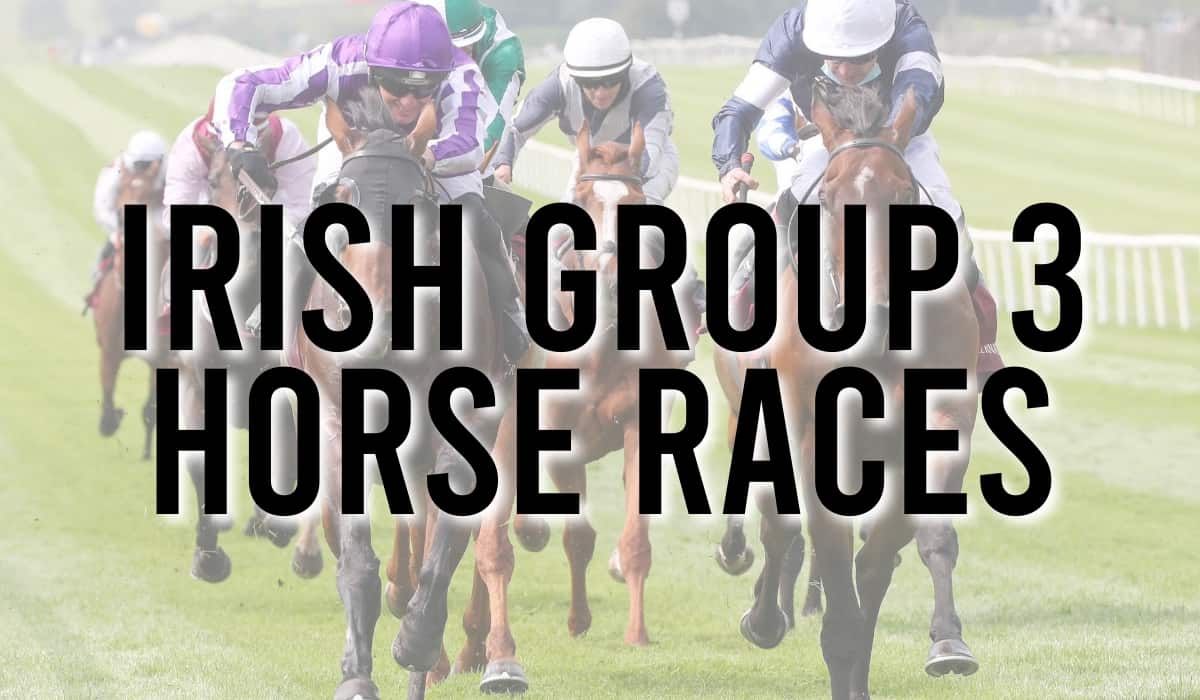
- Irish Listed Horse Races
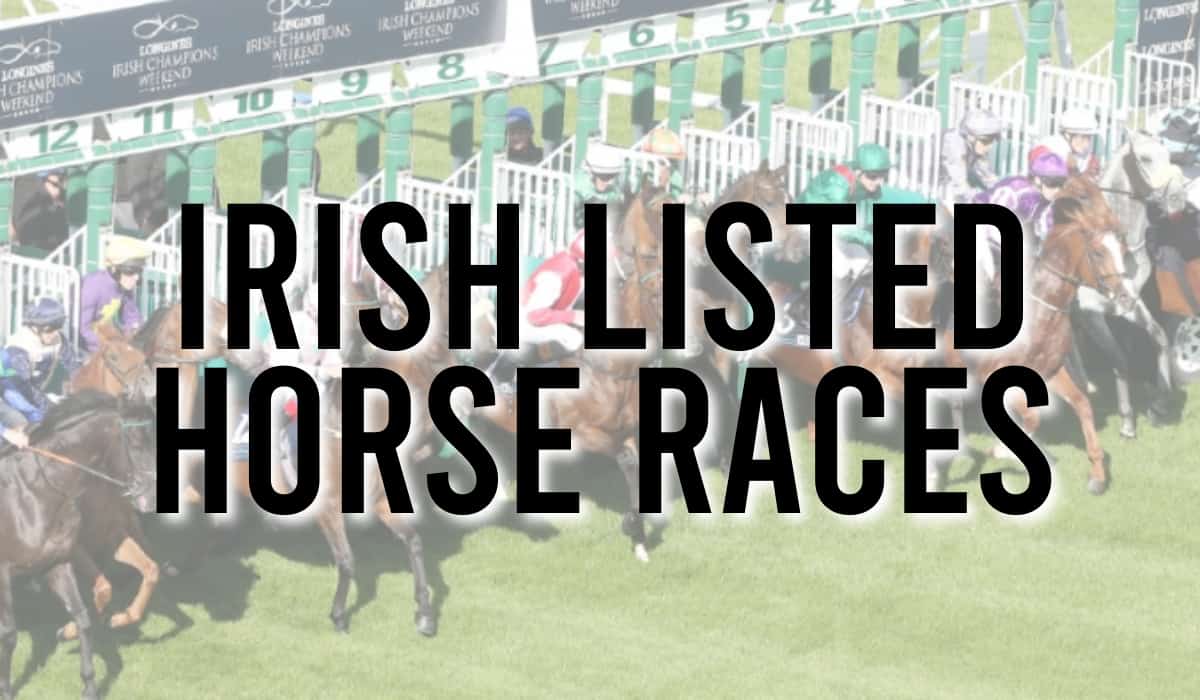
- Irish Premier Handicap Horse Races
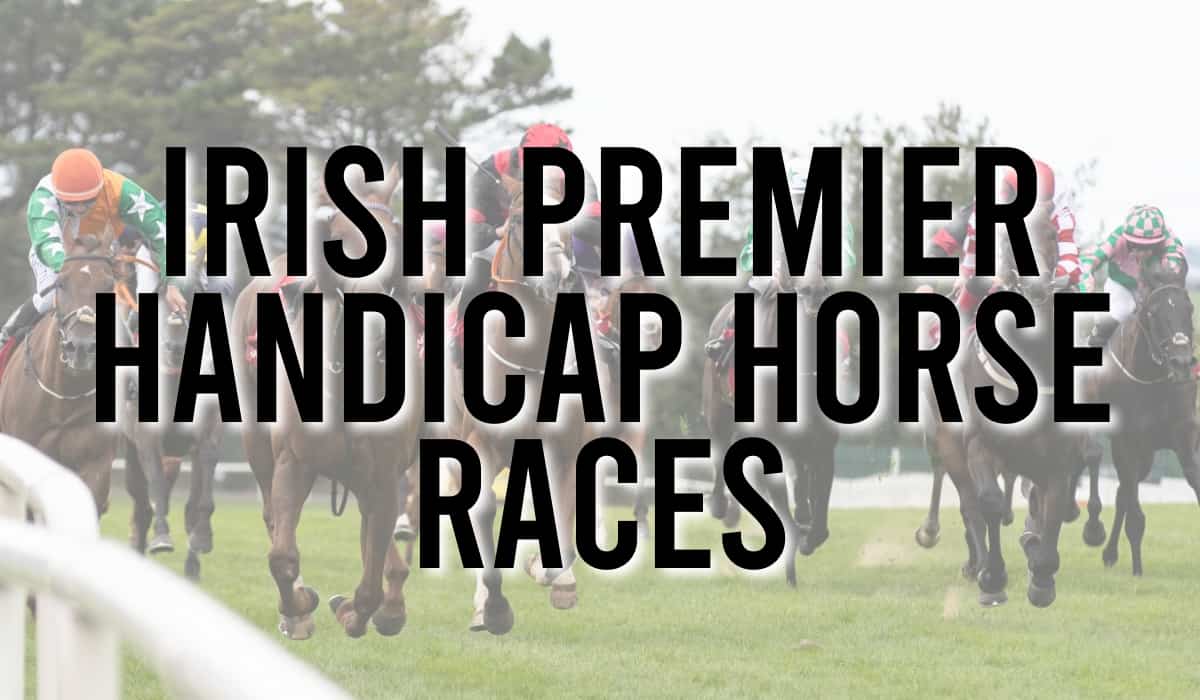
- Listed Horse Races
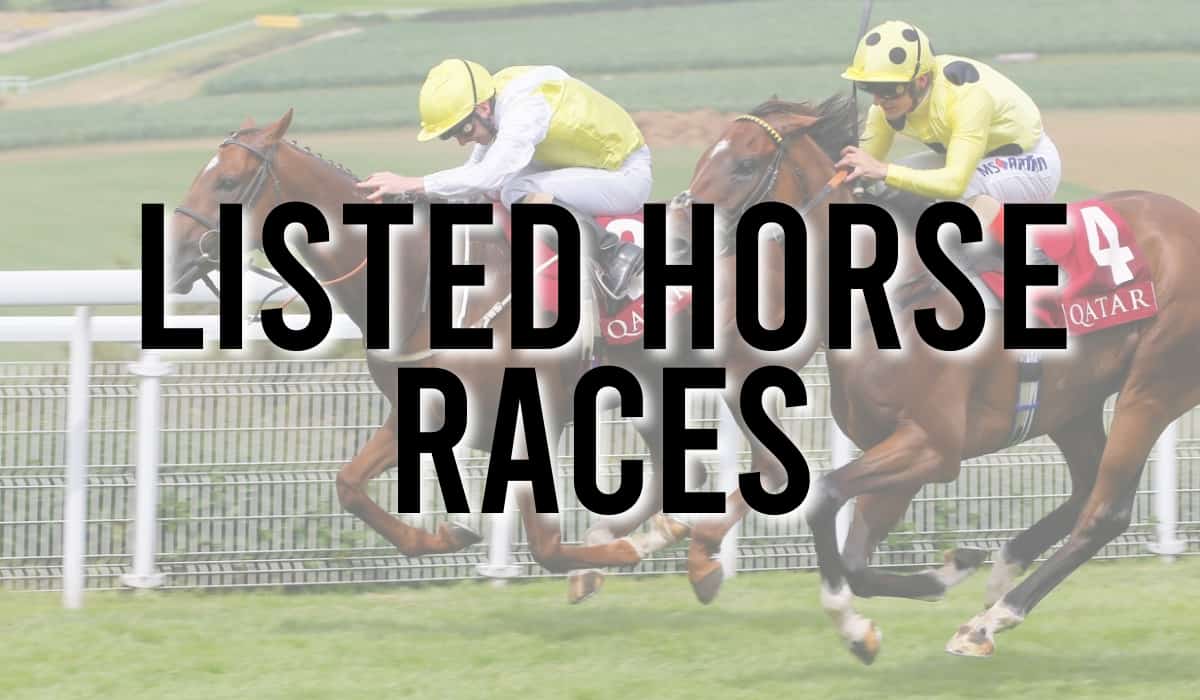
- National Hunt Racing
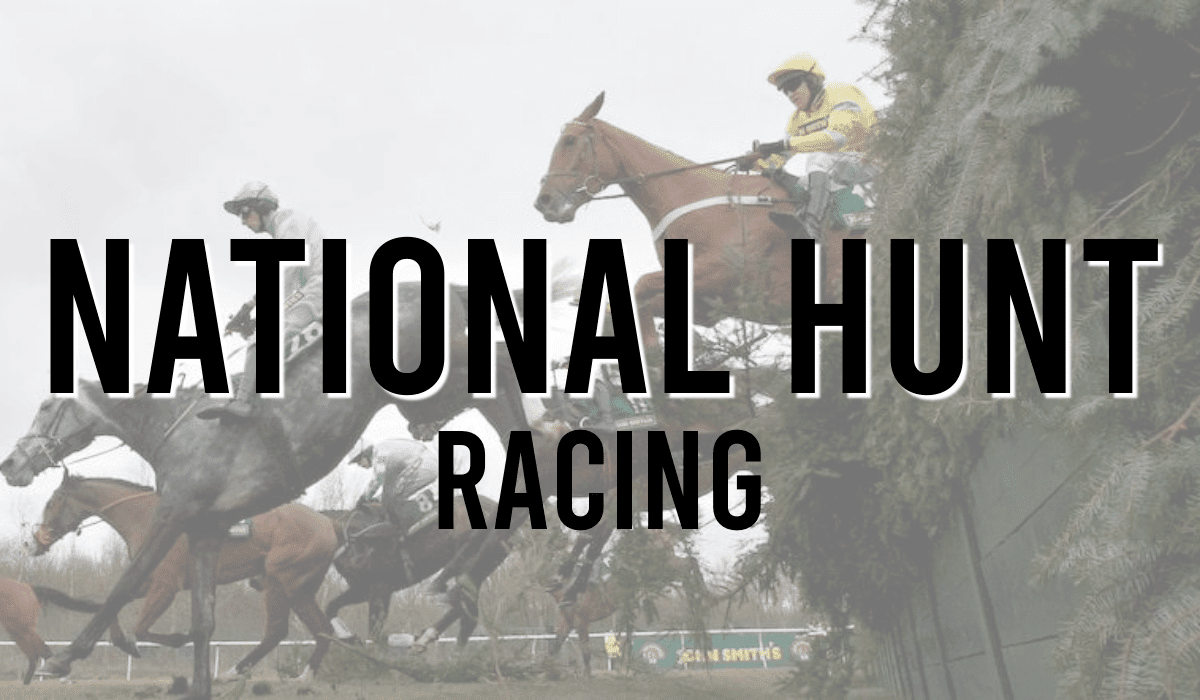
- Premier Handicap Horse Races
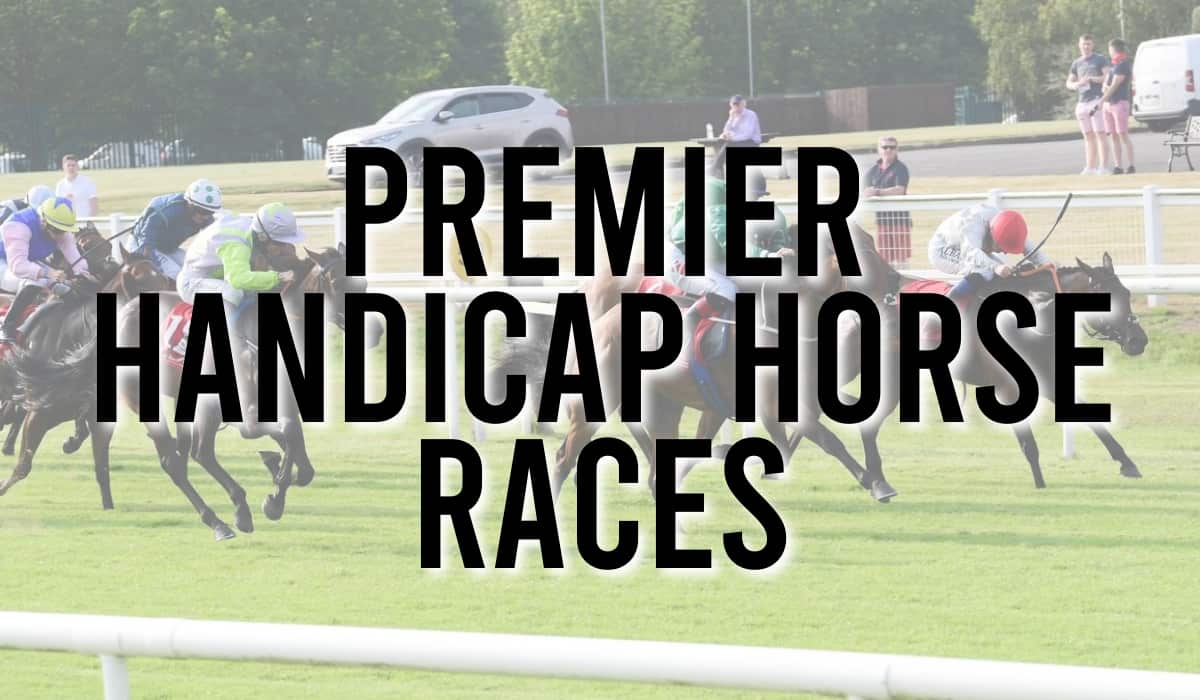
- Type of Horse Races

In our guide, we will give you an overview of all the different types of horse races in British racing.
The main types of horse races are:
Contents
- 1 Flat Racing
- 1.1 Group Races
- 1.2 Listed Races
- 1.3 Black Type Races
- 1.4 Handicap Races
- 1.5 Restricted Handicaps
- 1.6 Maiden Races
- 1.7 Claiming Races
- 1.8 A Selling Race Or Seller
- 1.9 Auction Races
- 1.10 Sales Races
- 1.11 Median Races
- 1.12 Novice Race
- 1.13 A Classified Stakes Race
- 1.14 Conditions Races
- 1.15 Apprentice or Conditional Races
- 1.16 Amateur Races
- 2 The Classic British Flat Races
- 3 National Hunt Racing (Jumps Racing)
- 4 Popular Questions
- 5 Summary – The Types of Horse Racing
- 6 Other Horse Racing News
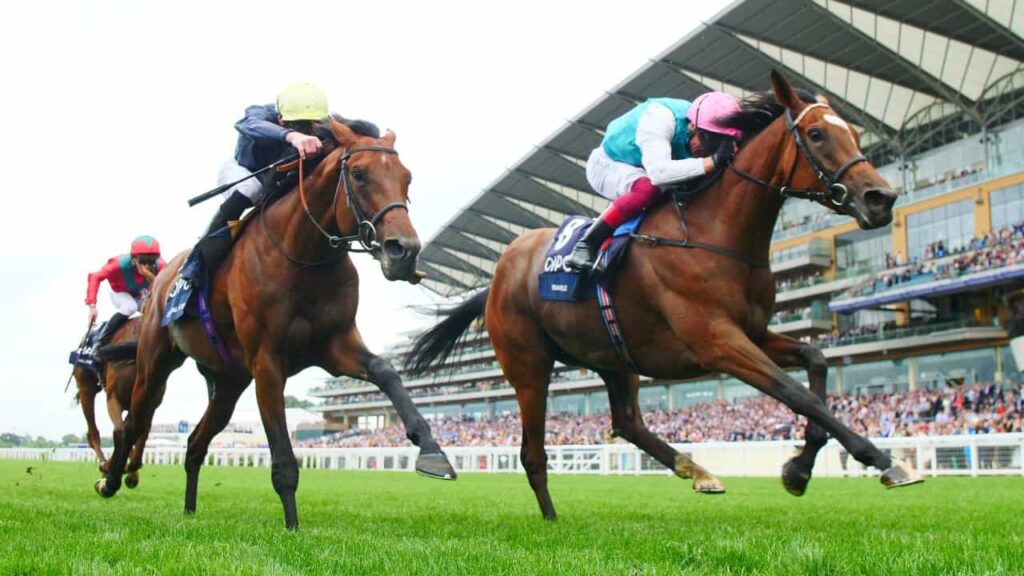
Flat Racing
Flat racing, also known as The Sports of Kings, is horse racing that has no jumps involved. It is a race from the starting stalls (known as starting gates in the USA), to the finish line or finishing post.
Flat racing takes places from the minimum distance of 5 furlongs to 2 miles and 4 furlongs.
Flat racing is the most lucrative and prestigious of the two codes of racing, typically taking place on turf between May and October in the UK & Ireland.
In recent years, all-weather racing has been developed with all-year-round flat racing in pretty much any type of weather conditions. All-weather racing is generally a lower quality of racing than the main turf season. Recent increases in prize money and the introduction of an All-Weather Final Championship has gone some way to try and balance this.
The main flat races are considered to be The Classics which include the 1000 Guineas and 2000 Guineas, The Epsom Derby and Oaks and St Leger.
Flat racing encompasses prestigious racing festivals such as The Chester May Festival, The Dante Festival, Royal Ascot and Glorious Goodwood.
The types of flat racing, which are recognised worldwide, are:
Group Races
Group races are the premium level and most prestigious of thoroughbred racing. They are broken into three categories;
Group 1 is the top level, then 2 and then 3.
Most of the group races are restricted by the age and gender of the horse (for example, 2 years only, 3 years only, 4 years and over, colts only, fillies only etc).
Group races take place at several different UK racecourses throughout the year. As the premium races, there are fewer Group races than the other types.
Group races also carry the most prestige, prize money and a generally a career in breeding for the successful horses at this tier.
Group 1 Races
The most important and highest level of flat race is the Group 1.
In these races, some allowances are given to younger horses against older horses, fillies and mares also get an allowance against their male counterparts.
These are generally the most iconic and biggest horse races in the world, most of them have a long history going back centuries, some of the most famous Group 1 races are:
- The Derby
- The Oaks
- The 1000 Guineas
- The 2000 Guineas
- St Leger
- The Lockinge
- Ascot Gold Cup
- Coral-Eclipse
- Dubai World Cup
- Haydock Sprint Cup
- The Nunthorpe
- July Cup
- Queen Elizabeth Stakes
- The Kentucky Derby
- The Arc
They are the ultimate test for horse, jockey and trainer to win.
Group 2 Races
Group 2 are the second-highest tier of races.
The weights are calculated similarly to a Group 1, however, penalties (extra weight) are given to horses who have won at Group 1 or Group 2 level.
Some of the most famous Group 2 races are:
- Royal Lodge Stakes
- Dante Stakes
- Yorkshire Cup
- Ribblesdale Stakes
- Princess of Wales’s Stakes
- Great Voltigeur Stakes
- Royal Lodge Stakes
Group 3 Races
Group 3 is the third-highest tier and again takes an incredibly talented horse to win a horse of this calibre.
The weights are calculated similarly to a Group 2, with penalties (extra weight) given to horses who have won at Group 3 or Group 1 or 2 level.
Some of the most famous Group 3 races are:
- Winter Derby
- Greenham Stakes
- Sagaro Stakes
- Chester Vase
- Musidora Stakes
- Brigadier Gerard Stakes
- Jersey Stakes
- Rose of Lancaster Stakes
Listed Races
A Listed race is a slight step down from Group level. It is the intermediate stage from a handicap into Group races.
The same weight penalty structure applies as in Group races.
Some of the best famous Listed races are:
- Brocklesby Stakes
- Feilden Stakes
- Pretty Polly Stakes
- Royal Windsor Stakes
- Festival Stakes
- Hilary Needler Trophy
Black Type Races
Black type races are contested races in listed, graded or group classes.
The phrase black-type refers to the system of printing in bold type within the pedigree charts of sales catalogues the names of those horses that have won or been placed in Group/Graded races.
This is designed to highlight quality performers within a horse’s family tree.
Handicap Races
Most horse races are handicap races, these are run every day of the week at UK and Irish racecourses.
In a handicap race, horses carry different weights based on their previous performances and runs.
The highest rating a horse can have in a handicap is 110, after that they have to “step up in class” and compete in Group or Listed races.
There are also maiden and novice handicaps – those are a combination of the handicap structure with the added regulations of those races applied on top.
For more information on handicap races read out what is a handicap horse race guide.
Some of the most famous listed races include:
- English Lincoln
- Chester Cup
- Royal Hunt Cup
- Sandringham Handicap
- Wokingham Stakes
- Stewards’ Cup
- Cambridgeshire Handicap
Restricted Handicaps
This has all the principles of a standard handicap but can be restricted to certain horses by age, gender etc.
Maiden Races
A maiden race is for horses who have not won a race previously.
Horses that have never won a race under that specific code on the flat, hurdles or over the chase fences.
Many of the runners in such events are lightly raced or even unraced.
Claiming Races
These are races where all the horses in the race are automatically put up for sale after the race – not just the winning horse.
A price is pre-determined on entering the horse by the current owners. The price that a horse is to be sold for dictates the amount of weight the horse carries in the race. The higher the price of the horse, the higher weight it much carry.
If more than one person tries to “claim” the same horse, lots are drawn to decide the winner. If a current owner wishes to try and reclaim or keep their current horse, they can put in a “friendly claim” for £500.
A Selling Race Or Seller
Selling races works on a similar principle to a claimer with all runners – aside from the winner – up for sale for a pre-determined price. The winner is auctioned off in the winners’ enclosure after the race.
A seller race can be a handicap or a non-handicap.
The key element to a seller is the winner is offered for auction in the winner’s enclosure post-race. All beaten horses in a seller are available to claim via the same methods outlined for claiming races.
Auction Races
These races are restricted to cheaper horses and the conditions of the race will dictate the price limit of the horses that are permitted to enter. Weights carried by horses are determined by the sales price of the individual horse.
Sales Races
These are normally quite valuable races and they are limited to horses bought at a particular auction sale (such as Tattersalls).
The weight carried in these races is dictated by how much was paid for the horse, the lower the price tag the lower weight they will carry in the race.
These races are particularly common for horses bought as yearlings and then racing as 2-year-olds.
Median Races
These are also races for horses bought at a particular sale, normally again this is on the cheaper end of the scale.
It is worked out by calculating the median price of a sire’s offspring at the sales; this average price determined which horses are eligible to run. Horses who were sold for not more than the median price than the value of the race conditions are eligible to run.
Novice Race
A novice race is open to both maiden horses, as well as those that have won up to 2 races (or raced a number of times). Previous winners are usually required to carry a weight penalty based on the individual race conditions.
Horses are no longer eligible for some novice events once they have raced more than a specified number of times.
A Classified Stakes Race
These are races restricted to horses who all sit within the same handicap bracket, rather than competing on different weights it allows them to race on the same weight.
Conditions Races
These are races that are determined by the official rating and handicap mark of a horse but by the actual conditions of the race.
These conditions could be age, sex and penalties for previous wins.
Apprentice or Conditional Races
These races are determined by the experience of the jockeys.
The jockeys in these races with be apprentice or conditional in level.
Amateur Races
Again this race is jockey dependent, all jockeys must be of amateur status.
The Classic British Flat Races
British classics is used as a collective term to include Britain’s five elite races.
The Classic British races are a:
- 2,000 Guineas Stakes – takes place at Newmarket racecourse in May and is the first leg of the Triple Crown. This is a one-mile race primarily for 3-year-old colts.
- 1,000 Guineas Stakes – an almost identical race to the 2000 Guineas, the 1000 race is the day after 2000 Guineas at the same location Newmarket racecourse. However, the 1000 Guineas caters for 3-year-old and older fillies only. Along with Epsom Oaks and St. Leger Stakes, it forms as part of the Fillies Triple Crown.
- Epsom Oaks – takes place in June each year at Epsom racecourse, and it’s a one-mile four-furlong race for 3-year-old fillies. This race counts as the middle leg of what is referred to as the Fillies Triple Crown.
- Epsom Derby – one of the most renowned national sporting events, the Epsom Derby race is considered to be the biggest race of the five classic races. This is a one-mile four-furlong race for 3-year-old colts and fillies.
- St. Leger Stakes – takes place each year at Doncaster racecourse in September as the final race for the Triple Crown competition. The race takes place over one mile for 3-year-old colts and fillies.
British Triple Crown Races
As mentioned the British Triple Crowd races are:
- 1000 or 2000 Guineas
- The Derby or Oaks
- St Leger
Conditions of these races are:
- Restricted to thoroughbred horses
- Only three-year-old horses compete in the Triple Crown
- There are three races
- Winning all three of the Triple Crown thoroughbred races is an incredible, and rare, accomplishment
The achievement of winning the entire three races for the English Triple Crown has not been succeeded by any horse since Canadian-bred horse Nijinsky, trained in Ireland and rode by jockey Lester Piggot.
American Triple Crown Races
Other countries have their own Triple Crown Series. For instance, in North America, the Triple Crown is:
- Kentucky Derby
- Preakness Stakes
- The Belmont Stakes
Why not check out my racing blog? I cover a whole range of horse racing subjects – everything from Horse Racing Racecards, to how to place a bet, a look at the type of horses and more!
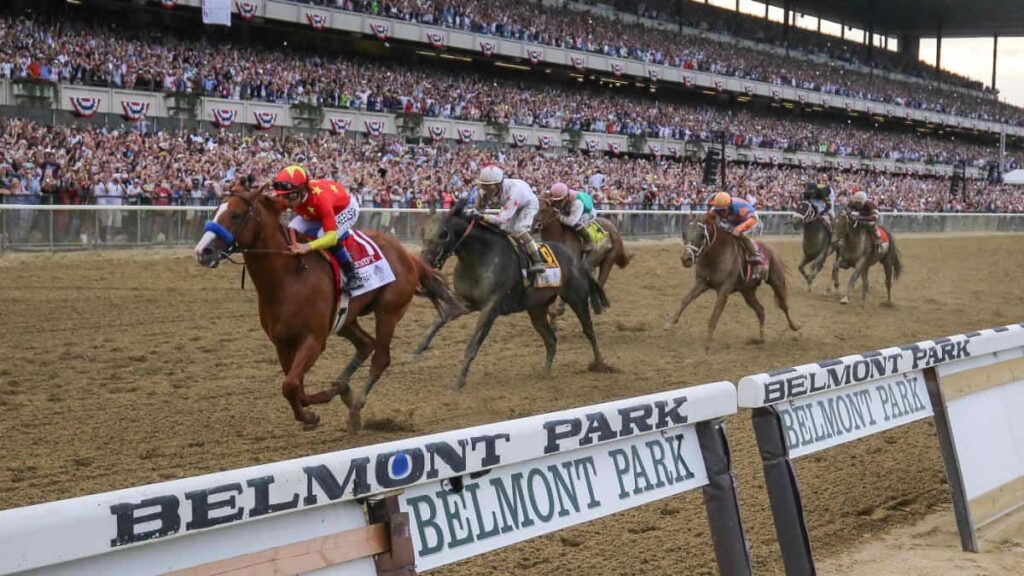
National Hunt Racing (Jumps Racing)
National Hunt racing (jumps racing), is racing that takes place over hurdles or fences.
Races distances range from a minimum of 2 miles to 4 and a half miles.
It is a hugely popular form of horse racing particularly in the UK & Ireland, although it is enjoyed worldwide. It is sometimes affectionately called The Sport of Farmers.
It is also known as “steeplechasing”, this is because in days past horses and jockeys used to race between one church parish to the next – essentially from one church steeple to another; hence the name steeple-chase was created!
The most famous jumps races are The Grand National, The Cheltenham Gold Cup and The Champion Hurdle.
The main jumps racing festivals include the Cheltenham Festival, The Dublin Racing Festival and The Aintree Grand National meeting.
The type of jump races are:
Hurdle Races
These are the smaller obstacles in the two types of jumps racing.
Most horses start their jumping careers over these smaller jumps before moving to the larger fences.
Horses compete over hurdles in a variety of different race types; including Open Company and typically race in either Graded, handicap or selling company.
The type of hurdle races are:
Graded and Listed Hurdle Races
Graded races are the equivalent of Group races on the flat – they are the highest level. They follow the same pattern as these Group races.
The most prestigious hurdle races are the Champion Hurdle, The Stayers Hurdle and The Aintree Hurdle.
Handicap Hurdles
The handicap system in hurdles races operates the same as on the flat with weight carried on the ability of the horse and previous performances.
The better horses in essence carrying more weight than the less talented ones.
Often handicaps are Graded with the top ones being A, then B and C etc.
Novice Hurdle
A novice hurdle is a race for horses who have not run over hurdles in a previous season, novice refers to their level of experience.
Claiming and Sellers
These operate in the same way as they do with flat races, explored above, with horses up for automatic sale after the race. In the case of a seller, the winner is up for auction.
Chase Races (known as Steeplechasing)
A Chase Race (or Steeplechase) is basically racing over the larger types of jumps.
The distinction in race types is similar to hurdle races.
The main types of chase races are:
Championship, Graded and Listed Events
These are the top-level races, mainly competed off level weights (some weight penalties are taken into consideration), they ultimately identify the best horse at that particular distance.
The main and most prestigious chase races in a season are:
- Cheltenham Gold Cup
- Stayers Hurdle
- Queen Mother Champion Chase
- Champion Hurdle
- Tingle Creek
- King George
- Clarence House Chase
Handicap Chases
These operate in the same way to flat and handicap hurdles, with weight allocated based on an official rating as given by the BHA or IHA. The better horses carry large weights.
The main handicap chases in a year include:
Read more about handicaps and how they work in our blog.
Novice Chasing
Likened to novice hurdling, these races are confined to horses having their first season over the larger jumps.
Beginners Chase
These are similar to novice chases, the conditions of this race mean that they are restricted to horses who have not won a chase before (although they don’t have to be a novice).
Graduation Chase
These are intermediate type races, the conditions of these races mean that they are restricted to horses who haven’t won more than two steeplechase races in their career.
Claiming and Sellers
These operate in the same way that the flat and hurdle counterparts do.
Hunter Chases
These are amateur jumps races, restricted to amateur riders and horses. They are generally viewed as an education for young horses but are also enjoyed by veteran horses, who are possibly past their prime but still enjoying racing.
Point to Point
The last of our chase horse racing types, a point to point is an amateur jumps race. These represent the grassroots of jumps racing.
Bumper Races or National Hunt Flat Races
Bumpers races are flat races over a minimum of 2 miles for horses bred for jumps racing. No obstacles are jumped and they are seen as building blocks and the first steps on a horses racing career.
Popular Questions
What are the different types of horse races?
The main different types of UK horse races are:
- Flat Racing Types
- Flat Racing Groups & Classifications
- National Hunt Types
- National Hunt Grades & Classifications
What are the biggest horse races in the UK?
The biggest horse races in the United Kingdom are:
- Cheltenham Gold Cup
- Grand National
- Epsom Derby
- Victor Chandler Chase
- Queen Mother Champion Chase
- 2,000 Guineas Stakes
- 1,000 Guineas Stakes
What are the two types of horse racing?
There are two types of horse races:
- Jumps
- Flat
Both national hunt jumps and flat horse races incorporate different classes and types of races.
Summary – The Types of Horse Racing
As you can see there is a huge variety in the type of horse racing enjoyed in the UK & Ireland.
The main distinction is between flat and jumps racing but as explored you can see within those “codes” they are lots of various distinctions.
We hope that you have found this guide useful! Follow us on social media or more great articles, including our ‘What to wear at the races’ guide.
Other Horse Racing News
- Betting Slips
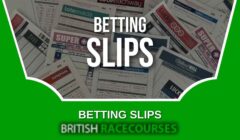
- Do Horses Enjoy Racing?
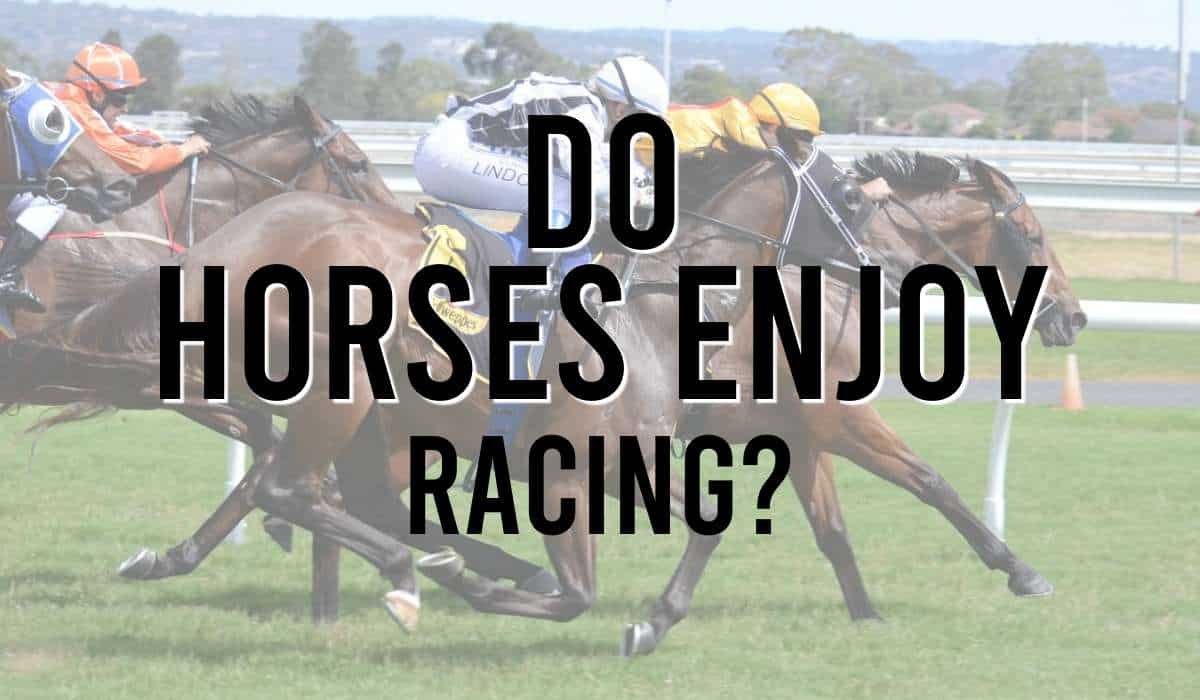
- Dresses For The Races
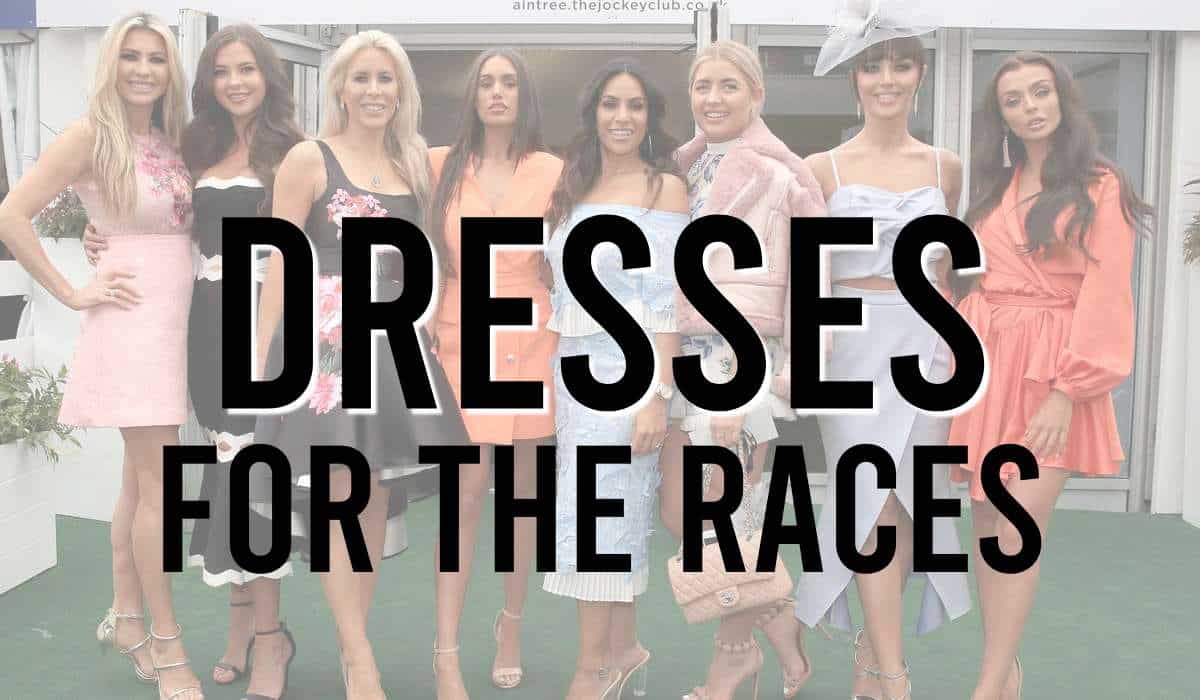
- Each Way Bet
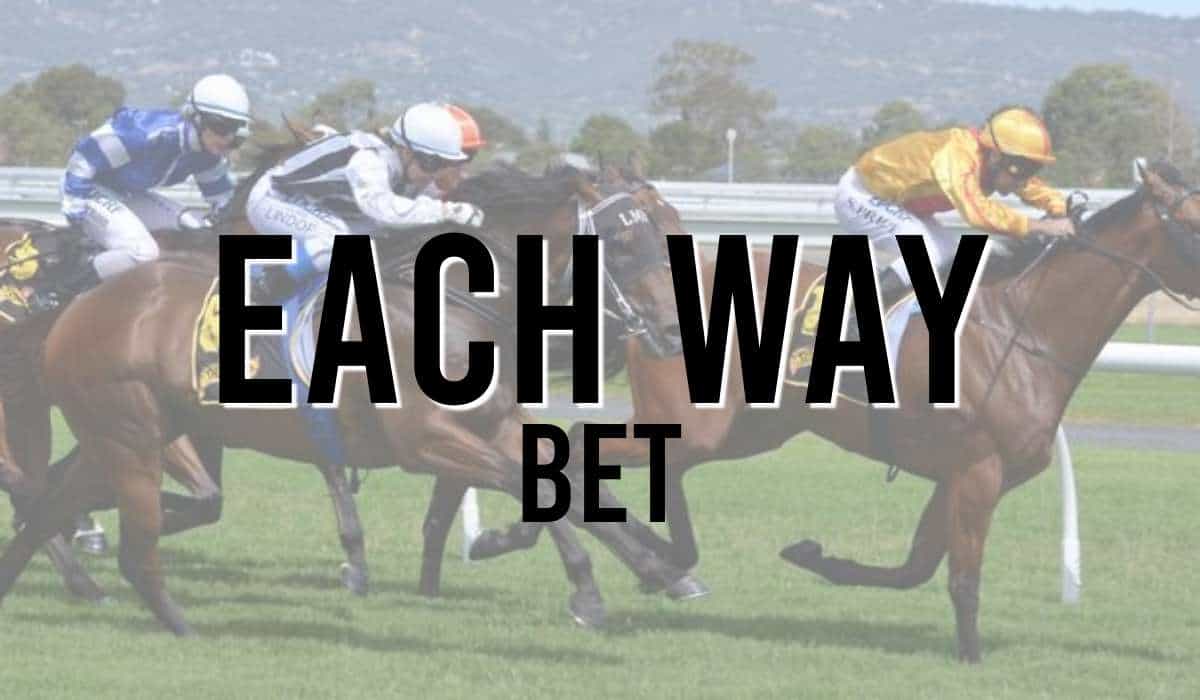
- False Starts in Horse Racing
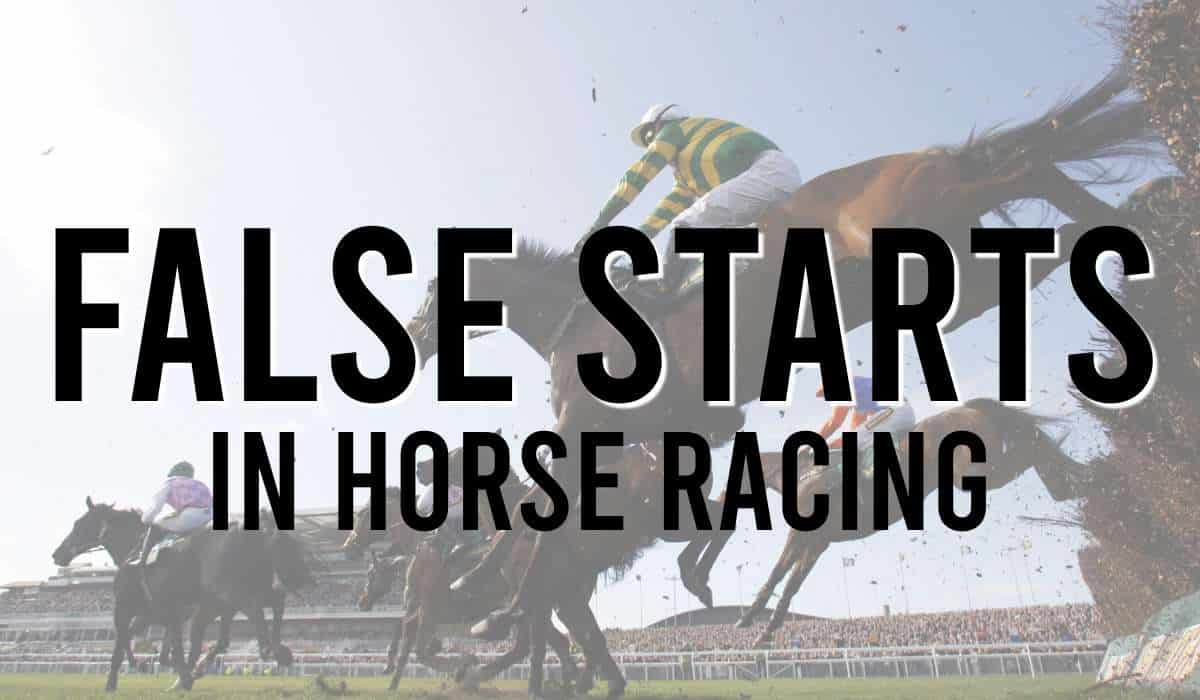
- German Horse Racing
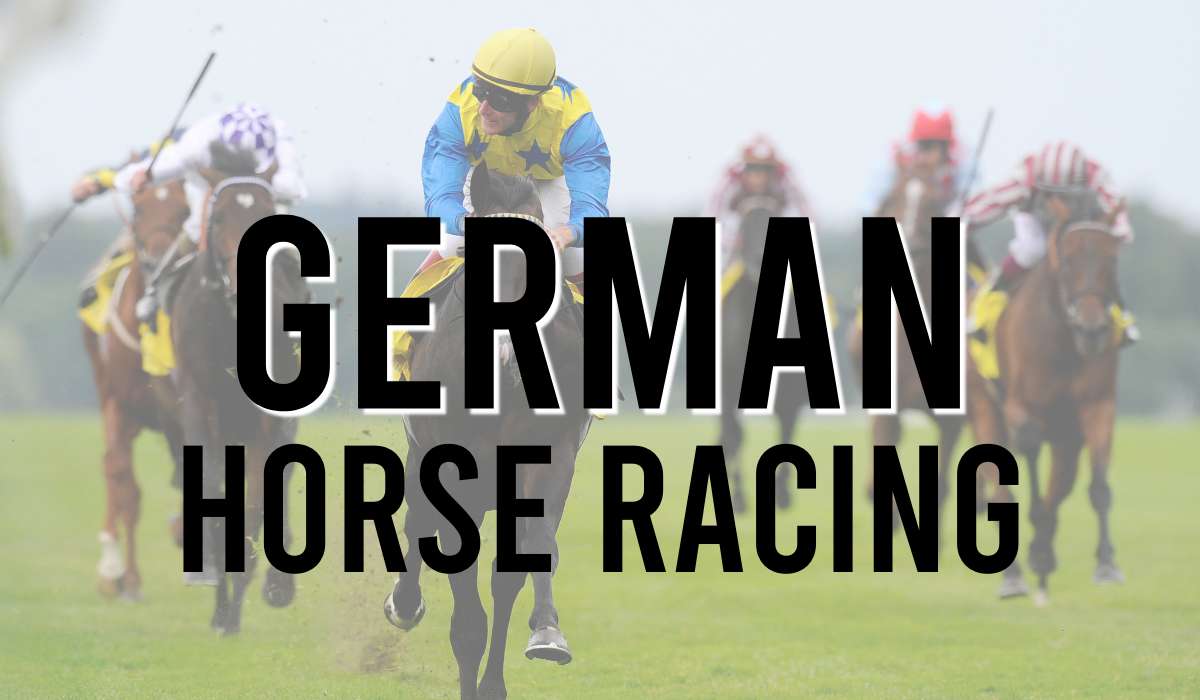
- Horse Racing Betting Terms

- Horse Racing Hurdles Guide
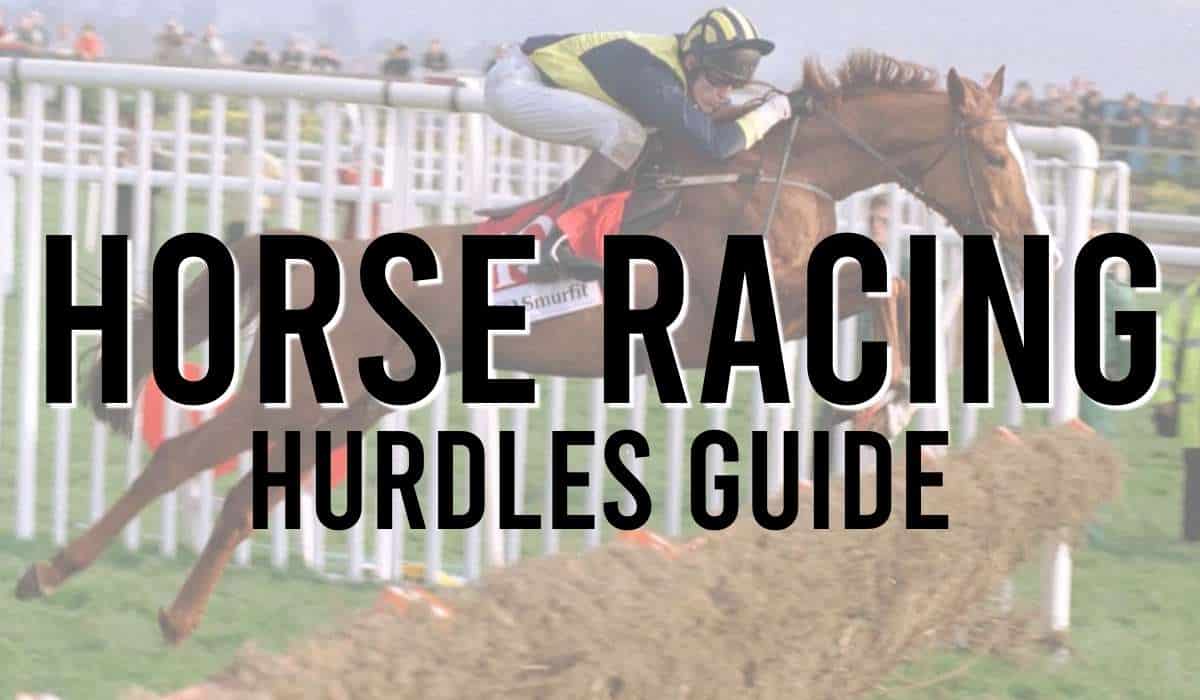
- Horse Racing Memes
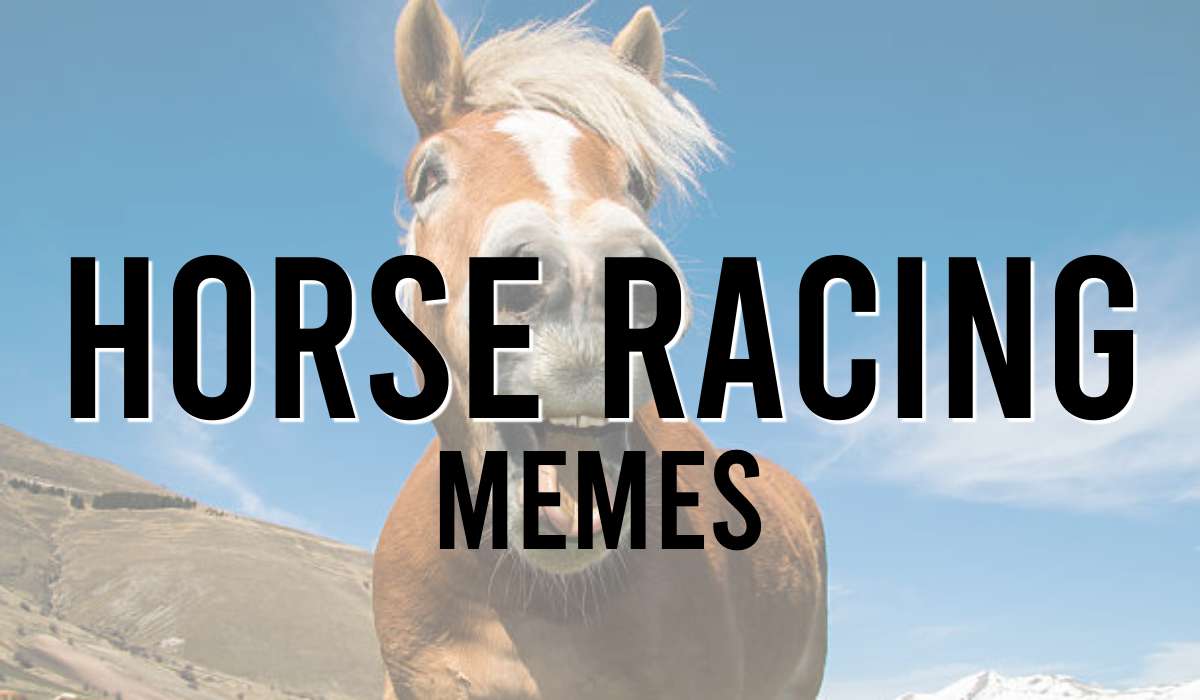
- Horse Racing Questions
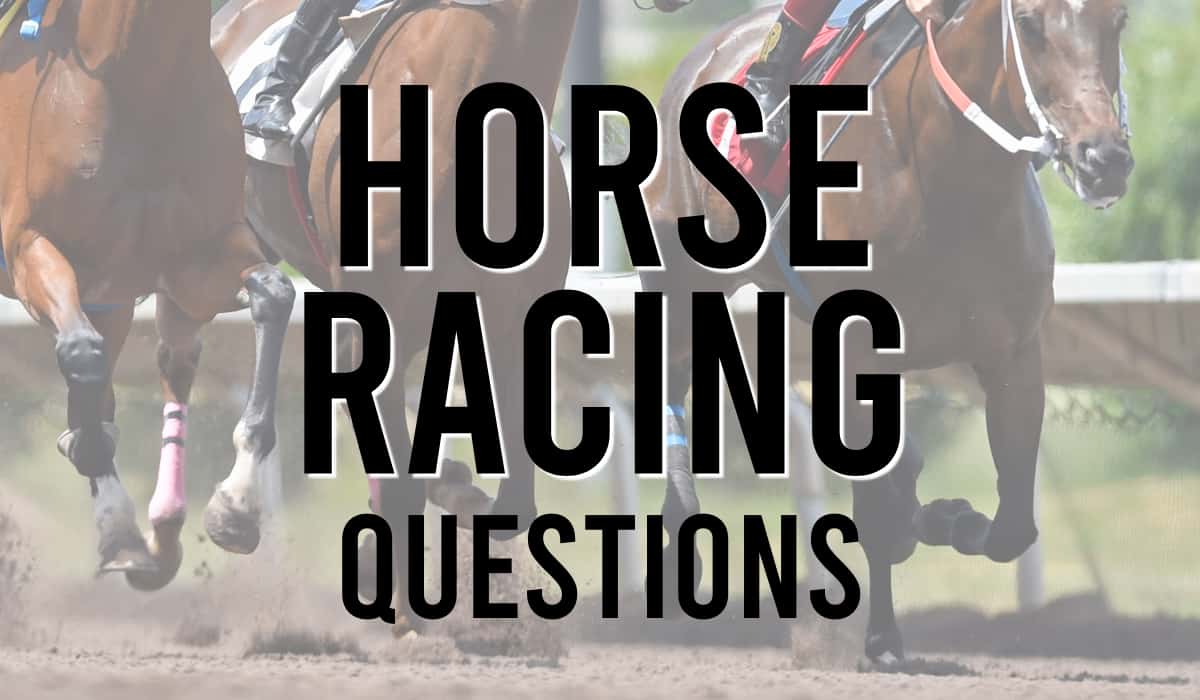
- How Long is a Horse Race?
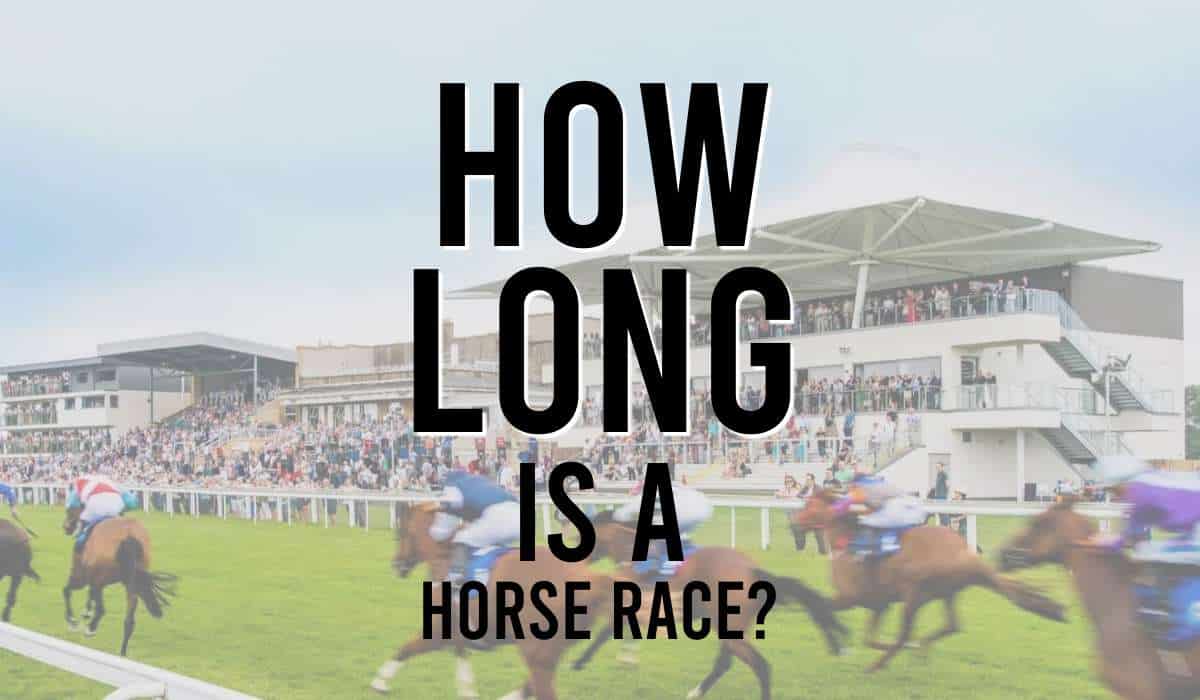
- How to Place a Bet
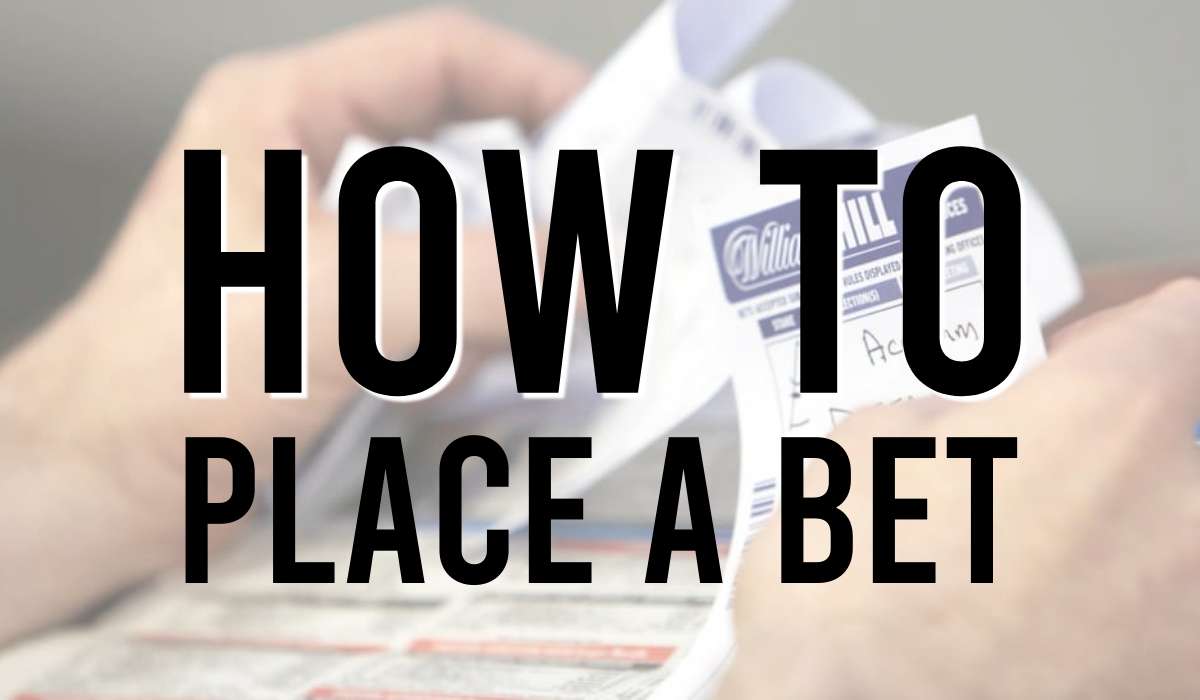
- Is Horse Racing Fixed?
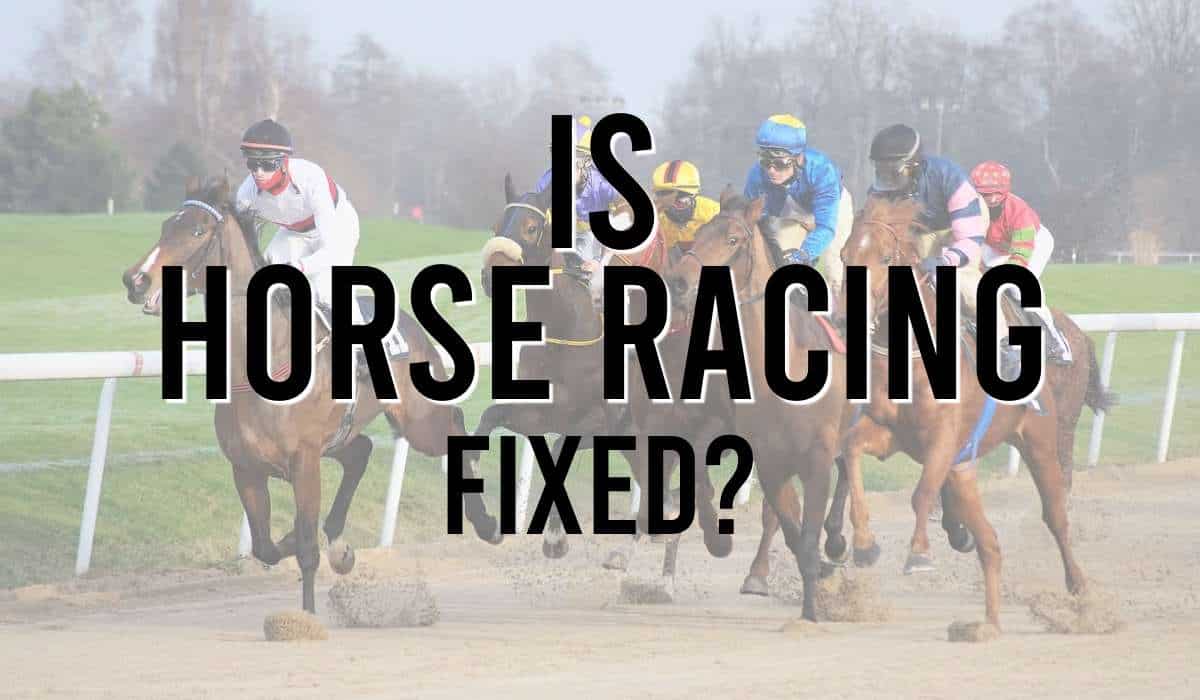
- Rule 4 Deductions
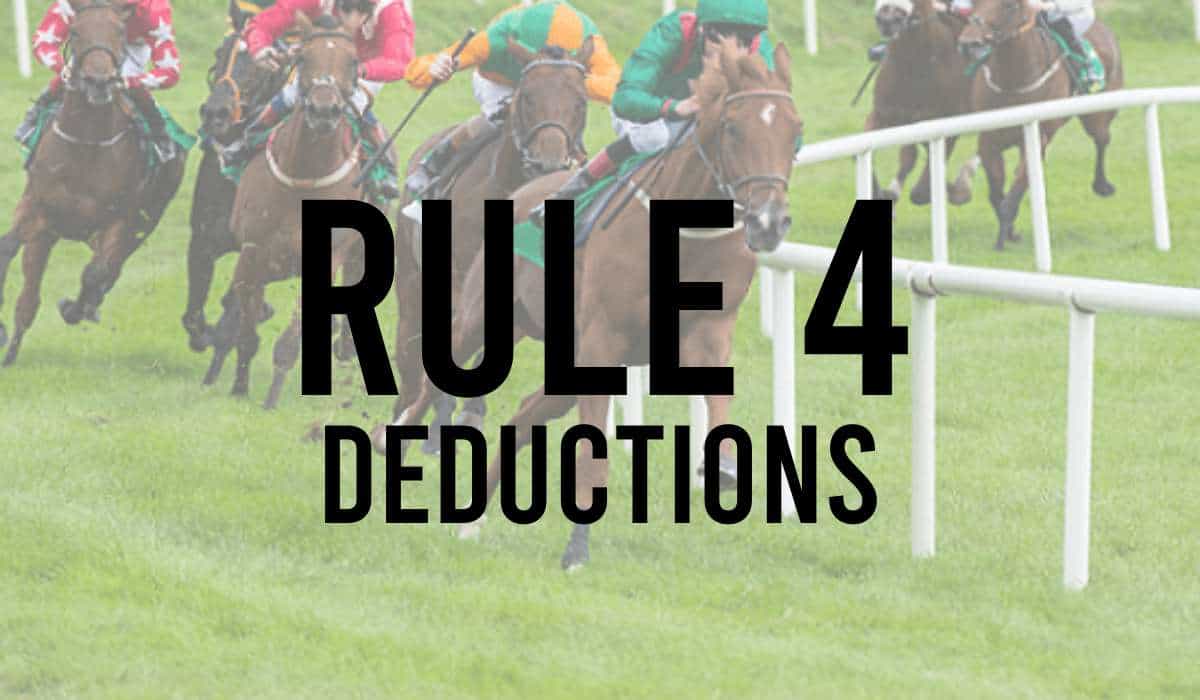
- SCR Horse Racing
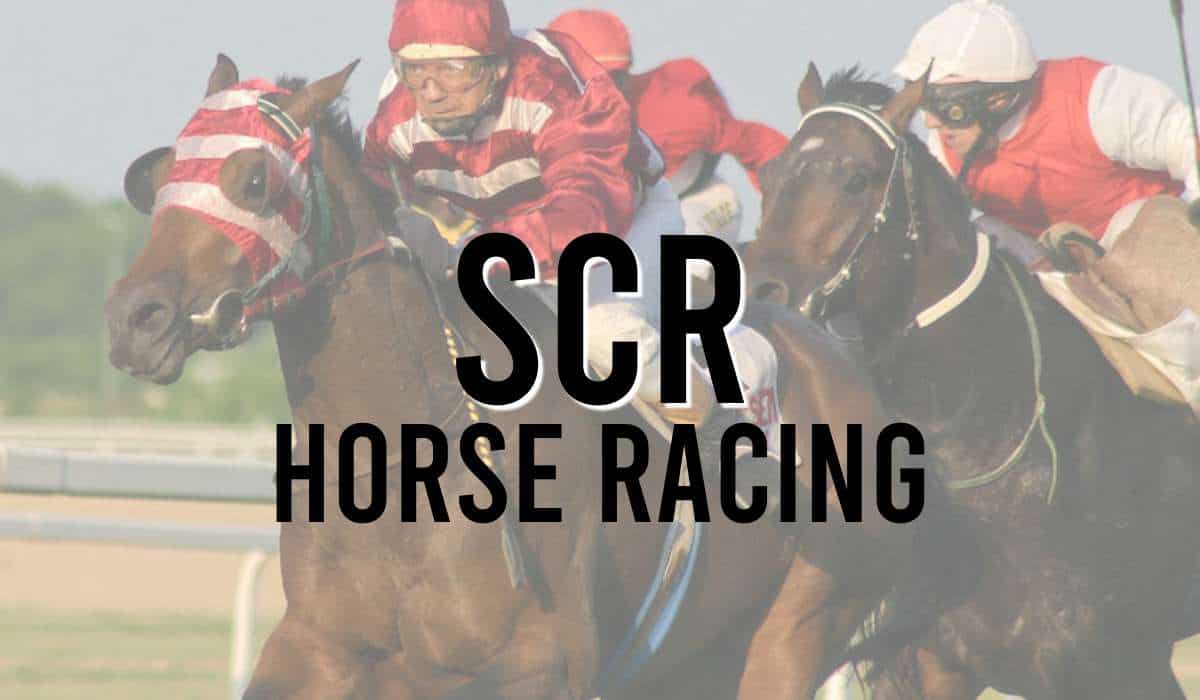
- Top Ten Racecourses in the United Kingdom

- Type of Horse Races

- What is a Handicap Horse Race?

- What Is A Stewards Enquiry In Horse Racing?

- What is the Best Post Position in Horse Racing?

- What To Wear At The Races

- Winning Distances In Horse Racing
